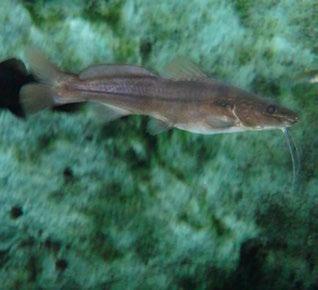
3 minute read
Flora y fauna de un Cenote
La flora y fauna de un cenote es tan única como los cenotes mismos, ya que en ellos se encuentran plantas y especies únicas en su entorno, sólo imagina estar dentro de la selva yucateca, rodeado del calor abrazador típico de la región, en eso pasa volando un pájaro “Toh” posándose sobre un enorme árbol de ceiba y abriéndose paso entre la vegetación como verdadero oasis en medio de la selva maya encontramos una caverna con agua fresca, cristalina y por su puesto llena de sombra.
Empecemos con los peces que más se observan en los cenotes: algunos llegaron por huracanes, como los guppys y lo sorprendente de la especie del bagre es que se considera que vienen desde el mar, a través de las corrientes subterráneas que comunican con algunos cenotes, así como algunas variedades de crustáceos marinos.
Advertisement
Sin embargo en lo personal mis favoritos son quienes viven en las profundidades de los cenotes donde la luz no llega y estos al no necesitar

de la vista para desplazarse, son ciegos como los peces “Dama Blanca Ciega” o la “Anguila Ciega Yucateca”, ambas en peligro de extinción.


Especies de peces de cenotes / Cenotes Fish Species

Otros ejemplares que tienen su hogar en los alrededores de los cenotes, son las tortugas, iguanas, ranas y mariposas. También anidan en sus paredes golondrinas y Pájaros Toh, mejor conocidos como “ave de los cenotes”. Este se distingue por tener una larga cola en forma de péndulo y por el color de su plumaje de tonalidades verdes y azules, la leyenda maya dice que si querías llegar a uno, tenías que seguir su canto. Respecto a la flora de los cenotes, varían dependiendo de su cercanía o lejanía de la costa.
Por ejemplo, los cenotes costeros están rodeados de manglares, palmas y helechos, mientras que en otros los rodean guayas, palmas cocoteras y árboles de cacao y de chicle. Es muy común ver en los cenotes de caverna, las largas raíces de estos árboles integrarse al paisaje de estalactitas y estalagmitas, las cuales bajan desde el techo de la bóveda hasta llegar al agua.
Editorial completa en explore. mx
Cenotes flora & fauna
The flora and fauna of a cenote is as unique as the cenotes themselves, since they are the only plants and species in their environment, just imagine being inside the Yucatan jungle, surrounded by the typical warmth of the region, that's what happens flying a “Toh” bird perching on a huge ceiba tree and making its way through the vegetation as a true oasis in the middle of the Mayan jungle we find a cavern with fresh, crystalline water and of course full of shade.
Let's start with the fish that are most observed in the cenotes: some came from hurricanes, such as guppies, and the surprising thing about the catfish species is that they are considered to come from the sea, through the underground currents that communicate with some cenotes, as well as some varieties of marine crustaceans.
However, personally, my favorites are those who live in the depths of the cenotes where the light does not reach

and these, not needing sight to move, are blind like the fish "Blind White Lady" or the "Yucatan Blind Eel", both in danger of extinction.
Other specimens that have their home in the surroundings of the cenotes are turtles, iguanas, frogs


and butterflies. Swallows and Toh Birds, better known as "bird of the cenotes" also nest in its walls. This is distinguished by having a long pendulum-shaped tail and by the color of its plumage of green and blue hues, the Mayan legend says that if you wanted to reach one, you had to follow its song. Regarding the flora of the cenotes, they vary depending on their proximity or distance from the coast.
For example, coastal cenotes are surrounded by mangroves, palms, and ferns, while others are surrounded by guayas, coconut palms, and cocoa and gum trees. It is very common to see in the cavern cenotes, the long roots of these trees integrate into the landscape of stalactites and stalagmites, which descend from the roof of the vault until they reach the water.







